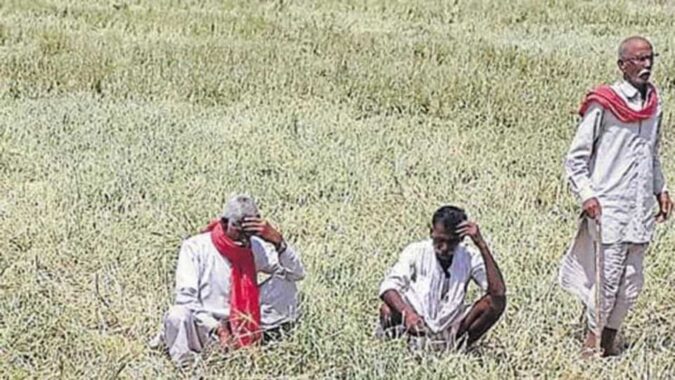India’s thriving farm sector — the only bright spot in its slowing economy — has become a hostage to warnings of a heat wave, muddling the outlook for policy makers already grappling with sticky inflation.
The nation’s economic growth unexpectedly slowed to a three-quarter low of 4.4% in three months to December, data showed Tuesday. The weather office’s prediction of a hotter summer compounded the concerns, throwing a fresh challenge before the central bank that’s already struggling to keep a lid on prices.
“If these weather forecasts do play out then I would think the farm sector output will certainly get affected,” Radhika Rao, senior economist at DBS Bank Ltd, said in an interview to Bloomberg TV Wednesday.
READ | Falling mustard prices worry Haryana farmers
Above-normal temperatures along with heat wave conditions are expected in most parts of India during three months ending May 31, threatening to lower crop production and hurting the efforts to control food costs. That’s also bad news for about two-thirds of India’s population dependent on agriculture, which contributes about 14% to the gross domestic product.
With a 3.7% growth, India’s farm sector powered the economy in the last quarter when manufacturing output faltered and services growth softened. As the chances of a crop-damaging heat wave rise, this growth driver may take a hit. The government’s forecast for a record wheat and rice production this year is also at risk as deficient rains could keep domestic food costs elevated, complicating the job of the Reserve Bank of India that is seen hiking rates in April amid slowing demand.
Fiscal Situation
“A drought this year is likely to lead to worse price fluctuations, given the already tight supply situation and entrenched price pressures,” said Madhavi Arora, an economist with Emkay Global Financial Services. This will tighten the fiscal situation further as the government would need to provide higher price guarantee to farmers, she said.
This also implies a potential impact on fertilizer prices, with usage likely to increase during a poor monsoon year to maintain crop yields, according to Arora, who sees fertilizer subsidies staying at an elevated level after a record payout in the current year, further reducing the government’s fiscal wiggle room.
India’s finance ministry has already acknowledged risks to growth and prices if El Nino conditions return. Chief Economic Adviser V Anantha Nageswaran on Tuesday flagged the need to be ready with both supply side and monetary policy measures in the wake of a deficient monsoon season.
The central bank, which has raised borrowing costs by 250 basis points since May to bring inflation within its 2%-6% target band, is also aware that the risks from adverse weather events remain.
The meteorological department’s predictions are “drawing a worrisome backdrop for harvest of the winter crop as well as sowing in the summer period,” said Rao. “Unfortunately irrigation covers only 50% of the crop land and there’s significant reliance on these rains.”
